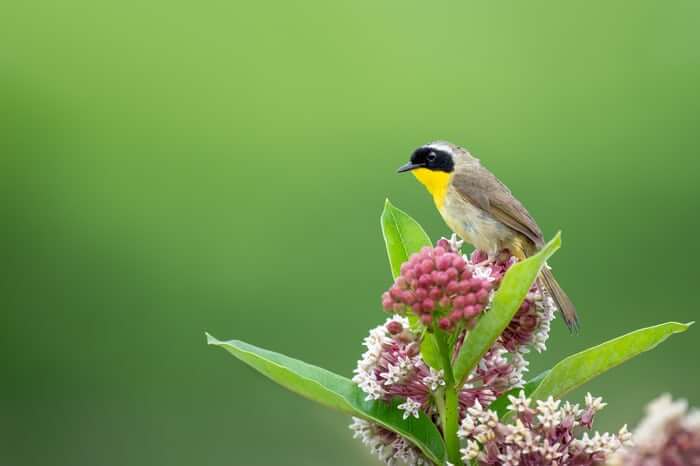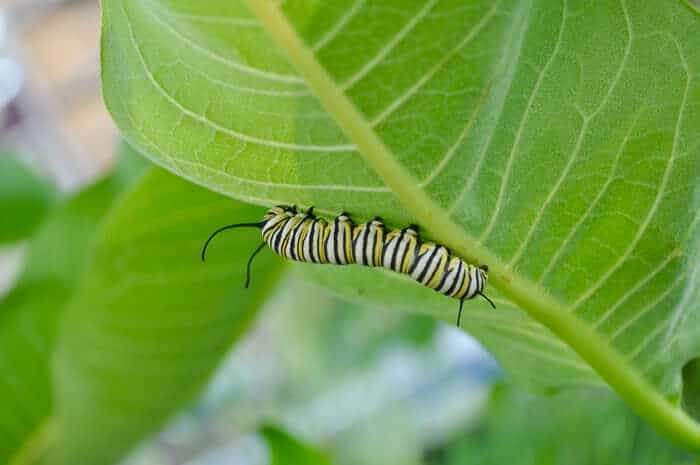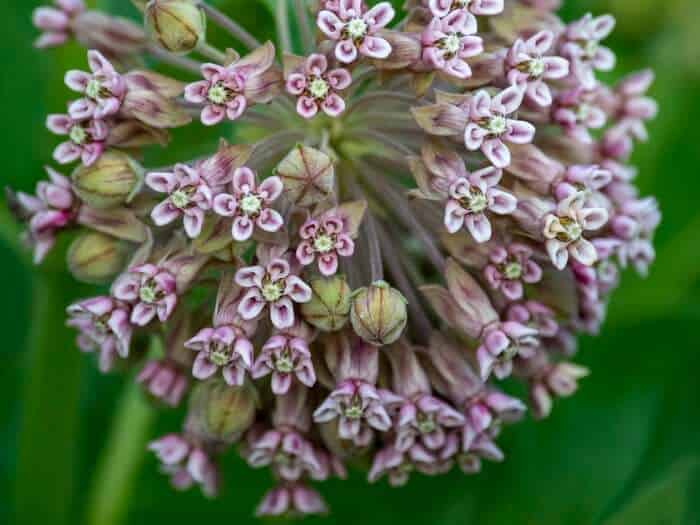Last Updated on January 16, 2023 by a Friendly Gardener
Native to much of the western half of the North American continent, this perennial herb plant, known as Showy Milkweed Asclepias speciosa, blooms into spherical clusters of furry flowers that run from the palest pink to pinkish-purple in color. Their native habitat is sunny and dry to a bit moist and they can be found in fields, prairies, meadows, savannas, and even along roadsides. A species that is closely related to simple or common milkweed (Ascepiassyriaca), they resemble each other however can be distinguished thanks to very fine white hairs and flowers that appear as tiny crowns of stars on showy milkweed. It produces a latex sap that is milky.
These are tall plants that generally grow to heights of 1.5 to 3.5 feet but can reach heights of six feet under the right conditions. Characteristic oval banana-like leaves are vibrant blue-green in color and large in formation. Stems are stalk-like with leaves that grow in an opposite arrangement on these stems. This plant produces a fragrant flower that will bloom from May through September with a bloom time that can last more than four weeks, and these flowers are a particularly generous source of nectar for bees, butterflies, and even hummingbirds as well as other insects. Showy milkweed produces a pod-shaped fruit in autumn that is entirely covered by hair that is actually seed pods. When they open, they reveal the showy milkweed seeds dressed in long white silk-like hairs. These plants are dormant in winter. This is a beautiful plant for home gardens that also contributes to the well-being of the environment. They are essential for the survival of the Monarch butterfly in North America.

Showy milkweed plants will thrive in direct sunlight and are not tolerant of shade. They need open spaces. Showy milkweed prefers dryer to medium soils that are well-drained but moist. They do not do well in gravelly dry soil. This is low maintenance member of the garden that is usually pest resistant and deer as well as rabbit resistant for those cohabiting with nearby wildlife. The plants have deep-reaching taproots that are best left where they are, once they have taken to the location.

How to Plant Showy Milkweed

Some simple considerations will make Showy Milkweed one of the stars of your home garden:
- Choose a position that offers full direct sunlight
- Soil quality should be light and well-drained
- If you use a potted Showy Milkweed plant from a local plant nursery, transfer them directly into your garden in the spring after there is no longer a danger of frost
- If you decide to plant Showy Milkweed seed, you should plant these seeds directly into the soil in autumn
An alternative to this is beginning your seeds indoors about four to eight weeks before the approximate date of the last frost. You can plant them in seedling trays about three-quarters filled with potting soil and sprinkle them about half an inch apart. Then cover your seeds with another quarter inch of soil mix. Water them well and place them in a sunny window or under grow lights if you have them. You should try to maintain the temperature at about 75° Fahrenheit and the seed should begin to germinate in a week to ten days. Once your seedlings have reached a height of three to six inches, you can transplant them to your garden. Make sure to loosen the garden soil well and now plant your seedlings about twenty-four inches apart.
Showy Milkweed Plant Care
Showy milkweed is more suited to a dryer soil bed. However, water regularly, adding mulch to dissuade any growth of weeds and to help maintain some moisture. As a low-maintenance plant, you will not need to fertilize or divide(it does not divide well). If you wish to avoid an excess of seedlings, remember in the early fall to remove all of the seed pods before they split open and scatter seeds in the area. As it can spread, even though it is considered less aggressive than other members of the milkweed family, it can be treated like an annual and pulled up in the fall to limit eventual spreading.
Showy Milkweed Facts
- The plant supplies very tough fibers that were traditionally used by Native Americans to create nets, ropes, regalia, and other items.
- Stems, immature fruits, flower buds, younger shoots, and even roots were regularly boiled for food. Stems and young leaves were sometimes used as greens.
- Flowers were sometimes eaten raw or boiled. They were also boiled for soup or to be eaten with meat.
- Native Americans created a type of chewing gum from the sap by heating it and then adding it to deer grease or salmon fat.
- Showy milkweed was also used by tribes for medicinal purposes including cuts and sores as well as ringworm and warts.
- Seeds of the plant were boiled and then the liquid was used on rattlesnake bites to draw out the poison.
- Roots were boiled to make tea to treat both measles and coughs and as a wash to treat rheumatism.
- Mashed root was used to treat and reduce swellings.
- Showy milkweed is invaluable to bumblebees, honeybees, and native bees.
- This plant attracts hummingbirds.
- Caterpillars pick up alkaloids from inside the plant which provides them with protection by making them taste terrible to potential predators.
- It is a source of food for Monarch Butterflies and is central to Monarch Butterfly Conservation efforts.
- Showy Milkweed attracts numerous varied types of pollinators.

Toxicity
- Milkweed plants are generally highly toxic and ingesting them can be fatal. The Showy Milkweed is one of the least toxic of the milkweed family.
- Recipes exist for preparing Showy Milkweed as a vegetable however the species must be positively identified.
These delightful fragrant and attractive plants will add texture to any home garden with sunny open spaces. As Showy Milkweed can be too invasive for traditional perennial garden beds, it would probably be better planted in areas that are not used for other perennials.

